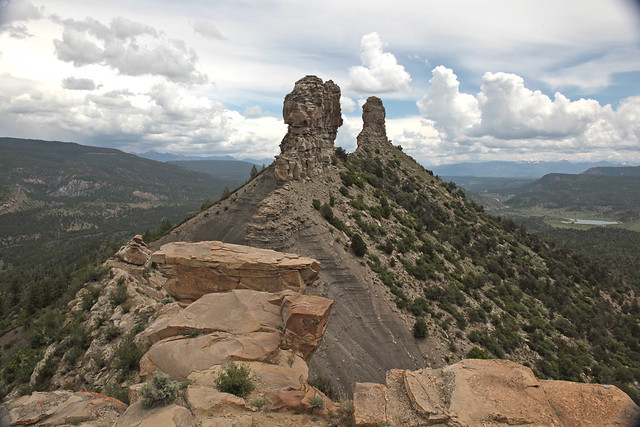We have much more to do and your continued support is needed now more than ever.
Chimney Rock, America’s New National Monument
Chimney Rock, one of America’s unique natural wonders, received a special designation today from President Obama—it is our nation’s newest National Monument. Native Americans, conservationists, preservationists, and local business owners are excited by this decision, and for good reason. By using the Antiquities Act authority to proclaim Chimney Rock a National Monument, President Obama has protected this cultural, archaeological and natural treasure for future generations to experience and enjoy.
A Popular Decision

When the country seems so divided on many important issues, preserving Chimney Rock brought people of diverse backgrounds together to demonstrate positive support for a place steeped in history. The site, with the twin pinnacles of Chimney Rock and Companion Rock, has strong cultural and spiritual significance for Native Americans, and was home to ancestors of the modern Pueblo Indians. Garrit Voggesser, National Wildlife Federation’s National Director of Tribal Partnerships, explains the importance of the decision:
“This is extremely significant for tribes and recognizes their historical, cultural, and spiritual connections to Chimney Rock and the surrounding region. This is a great use of the Antiquities Act. It reflects that this is something that everyone wants—local communities, tribes, the state, Republicans, Democrats and the administration. This is refreshing given the current gridlock in Washington.”
An Economic Boost to Southwestern Colorado
The momentum to upgrade the Chimney Rock Archaeological Area to a national monument was a locally driven process with strong backing from area residents, tribes, businesses and conservationists. This momentum translated into bipartisan support from Colorado’s congressional delegation, including Rep. Scott Tipton and Sens. Michael Bennet and Mark Udall. In addition to its intrinsic value, Chimney Rock National Monument is expected to bring in $1.2 million in economic activity to the area, based on a study commissioned by the National Trust for Historic Preservation. Native American ruins on and around Chimney Rock date back 1,200 years ago, and the elevated federal designation is bound to bring in archaeology enthusiasts and folks who just want to hike to see the ruins and surrounding San Juan National Forest. One of the most fascinating aspects to this area is the Great House Pueblo, where every 18.6 years the moon rises exactly between the two rock spires, known as a Lunar Standstill.
Pledge to speak up for wildlife in this election season and vote for lawmakers who will address the challenges we face.
A Win for Conservation
Besides Chimney Rock’s rich cultural heritage, the area is home to many iconic wildlife species, such as black bear, mountain lions, elk, mule deer, bald eagles and peregrine falcons. It’s a truly great western landscape that now will be preserved for our children and grandchildren. The Antiquities Act is a special conservation tool that was established in 1906 and has been used by 16 presidents since then to designate national monuments. The president can use the Antiquities Act to protect special natural, historical and cultural areas as national monuments. In the case of Chimney Rock, all the requirements were in place to make this a perfect use of the Antiquities Act.
Learn more about National Wildlife Federation’s efforts to protect our nation’s public lands for communities and wildlife at NWF.org/PublicLands and OurPublicLands.org.




















